Food Supply, Fracking, and Water Scarcity Challenge China’s Juggernaut Economy
New project finds that building the world’s fastest-growing economy risks public safety and tests global resource limits.
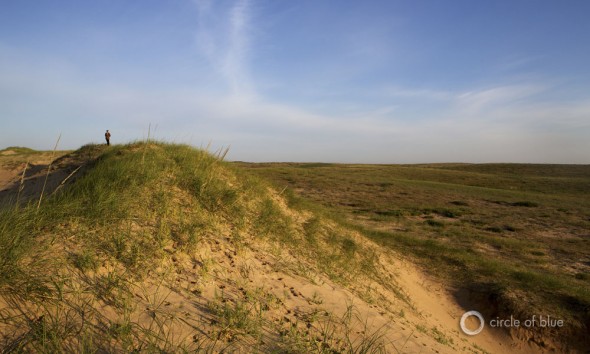
By Keith Schneider
Circle of Blue
YOU YI, Heilongjiang Province, China — Where the wide, muddy waters of the Songhua River flow north from Jiamusu to the Russian border, just 150 kilometers (90 miles) distant, the whole of China’s largest treeless prairie sweeps to the horizon. This expanse of fertile grasslands endures the dark fright of cold Siberian winters and the raging winds of Mongolian summers. At night, in the scattered villages, the sky fills with stars so thick and bright that walking along unlit streets is easy.
As late as the 1950s, the Chinese still aptly referred to this region as the Great Northern Wilderness. Virtually every hectare of arable land in other provinces was spoken for and cultivated more than a century ago, but Heilongjiang Province remained a place apart. Here, in China’s far northeast corner, the sun’s straight rays baked unplowed ground never shaded by homes or villages. In the wildest reaches eagles outnumbered people.
Heilongjiang (pronounced hay long gee-ang) is no longer that place. By the 1980s, as China’s population rushed past 1 billion, this expanse of virgin prairie — roughly the size of Syria — had been zipped open, plowed under, irrigated, and sown with seeds for rice and corn, soybeans and sugar beets. By the 1990s, Heilongjiang had climbed to the top of the list of China’s most important grain producers, filling rice bowls and satisfying the growing nation’s appetite for pork, chicken, and beef.
In the first decades of the 21st century, irrigation networks are steadily expanding to allow for more cultivation and higher production. Revenue from big grain harvests, and from coal and hard-rock mineral mining, power the construction of glass-and-steel towers that now define the skylines of Heilongjiang’s cities, particularly Harbin, the swarming capital of nearly 11 million residents. Freeways tie the province’s cities together. Airports, several designed by internationally acclaimed architects, and white-and-blue high-speed trains as clean as polished mirrors link Heilongjiang to the rest of the country. Even in the places still so distant that the rare expanses of prairie have not been broken, cell phone service is five bars strong.
Heilongjiang, in other words, is the expanding China that generates genuine enthusiasm among its own citizens and can intimidate foreigners who are not sure that their nations can compete. It is the China that invites the disdain of U.S. candidates during campaign season. But like an unstoppable wild fire, China also has become the world’s undeniable animating force in the international economy and the global environment.
China As World’s Animating Force
In effect, even as it grows bolder and wealthier, China also is producing extraordinary stress on its air quality, water supply, land, public health, as well as its long-term economic strength. But, unlike Las Vegas, we found that what happens in China with the soaring economic demand and deluge of wastes does not stay in China.
In 2010, the latest year for accurate figures, China accounted for 9.5 percent of global GDP. In order to fuel the economic engine — now the world’s second largest, behind the United States — China consumed 20 percent of the world’s energy, 51 percent of the iron ore, 47 percent of the steel, 54 percent of the cement, and 60 percent of global soybean exports.
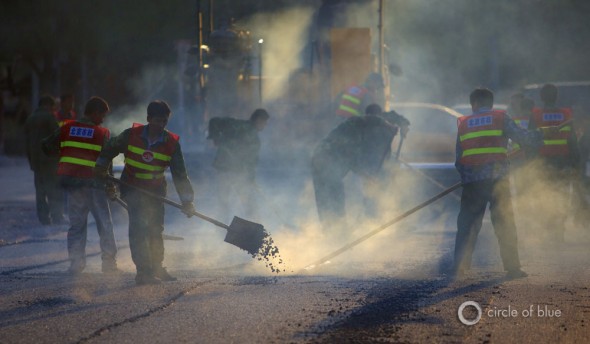
The Earth groans in response. China is now the world’s largest source of carbon emissions, sulfur dioxide emissions, and marine coastal pollution. China’s surging demand for fossil fuels is raising global prices for oil, gas, and coal, which, in turn, is helping to finance new water-intensive oil drilling in the deep shales beneath the American Great Plains; land-damaging tar sands oil development in Canada; and water- and land-wasting coal mining and natural gas production in Australia. China’s treasury and state-owned food companies are investing in a global land rush, buying millions of hectares of temperate farmlands in Africa and South America. Its state-owned power and construction companies are building the biggest hydro-electric dams in the world.
The world is witnessing a run on resources that, arguably, is unmatched by any country, ever. And while China’s 12th and latest five-year plan focuses on water conservation and environmental protection as national priorities, the reality is that Chinese culture — which prizes privacy, rebels against specific directives, and is devoted to GDP growth — impedes the work to secure natural resources.
Though authorities in Heilongjiang and elsewhere in China told us that the central, provincial, and municipal governments have begun to address environmental safety in earnest — and to some extent they have — we also found that the result of China’s unquenchable thirst for growth is tantamount to a water-wasting, resource-depleting, pollution free-for-all.
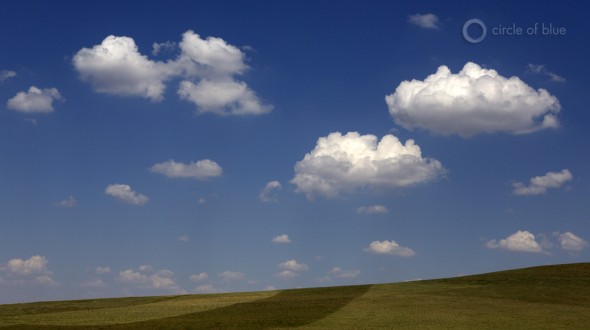
Return To China
In May and June, Heilongjiang Province was on the itinerary of eight provinces across northern, central, and southwestern China that were visited by Circle of Blue researchers for our newest project, Choke Point: China II, a research and reporting initiative done in partnership with the Wilson Center’s China Environment Forum. Over the next several weeks, in infographics, photographs, and comprehensive articles, Circle of Blue describes the extraordinary measures that China is taking to shift the geography and production practices in its agriculture and energy sectors to provide adequate supplies of food, fossil fuels, and fresh water over the next decade. We also report on the troubling and globally significant results to water, land, and public safety.
From the nation’s largest state-owned farm in Heilongjiang to a tiny growing cooperative in Gansu Province to the villages near China’s first deep shale natural gas wells in Sichuan Province, Circle of Blue researchers interviewed growers and shopkeepers, scientists and engineers, business leaders and government officials. Just as in our original 2011 Choke Point: China report, Circle of Blue’s researchers set out to gain a keener understanding of just how robust and risky China’s development really is.
Here is a sampling of what we found:
- China does not just want to be a self-sufficient producer of energy. The nation is determined to expand its position as this century’s largest energy producer and consumer, and that goal now includes sharply increasing the domestic supply of natural gas. State-owned energy companies — with technical assistance from the United States government and partnerships with Western energy companies — are drilling exploratory wells into deep shale reserves in preparation for what the central government hopes will be a natural gas production boom similar to what is occurring in North Dakota, Texas, Pennsylvania, Ohio and almost a dozen other American states. The idea is to extract enough natural gas as a fuel for electricity generation and manufacturing to reduce the coal production that is stressing water supplies in China’s northern and western deserts and which is the source of the highest climate-changing emissions on Earth.
Circle of Blue, however, found that China’s deep shale gas reserves are much more difficult to develop than those in the United States. Deep shale gas production is occurring very slowly in China, with just one or two new wells drilled a month in Sichuan Province, the primary production zone. In interviews with Circle of Blue, Chinese drilling engineers described a tangle of technical obstacles, including the presence of high concentrations of a deadly gas within the shale reserves; difficulty in tapping shales that are not as uniform as they are in North America; undeveloped pipeline and processing infrastructure; civic protests over land seizures for drilling pads; and centralized production and marketing that eliminates competition, which is severely slowing the industry’s growth.
The notion, as expressed this year by Chinese officials, that shale gas could help China to double its natural gas production by 2015 seems to be a pipedream. Not only is PetroChina, the largest developer, drilling only a dozen or so wells a year in Sichuan Province, but less than half of these are producing marketable quantities of gas, according to interviews with field personnel. (By contrast, in Ohio, where U.S. developers are opening the nation’s newest deep shale gas field, drilling rigs punched 140 wells into the ground during the first nine months of 2012 and few came up dry, according to the Ohio Department of Natural Resources.)
- Similarly, China does not just want to be a self-sufficient food producer. Now the largest grain grower in the world, China has experienced eight straight years of record harvests. But feeding 1.3 billion people — whose diets are favoring more grain-consuming chicken, pork, and beef — challenges the productivity of 120 million hectares (300 million acres) of arable land, roughly as much land that is farmed for crops in the United States. It also tests the capacity of an aging, leaky, and inefficient irrigation network.
In 2012, the Chinese central government embarked on a $US 6.3 billion (RMB 38 billion) five-year program to modernize and expand irrigation systems in Heilongjiang and three other northeastern provinces. The renovation represents an investment designed to ensure farm supremacy in China’s prime grain-growing regions for at least a decade. By 2020, China anticipates the need to domestically harvest 595 million metric tons of grain — which is 48 million metric tons, or 8.7 percent, more than in 2010 — and Chinese farm authorities are counting on the northeast region to grow most of that increase.
The expansion of irrigation networks in Inner Mongolia, Jilin, and Liaoning provinces have prompted concerns, however, because it would push new irrigation canals into highly erodible grassland regions. Circle of Blue learned that Chinese authorities are considering opening 30,000 hectares (nearly 75,000 acres) of grasslands to new crop production. But growing food in desert conditions on brittle grasslands could produce new areas of severe soil erosion, which already is endemic across much of northern China.
- It is not only the quantity of water available to agriculture that is a rising issue in China but also the quality of water used by farmers. Circle of Blue found that a portion of China’s farmland is irrigated with toxic wastewater. Industrial and municipal wastewater that flows through China’s irrigation networks has polluted nearly 10 million of China’s 120 million hectares (25 million of 300 million acres) of cultivated land. Moreover, 133,000 hectares (328,000 acres) have been infiltrated or destroyed by solid wastes, according to official statistics. China’s Ministry of Land and Resources estimates that heavy-metal pollution destroys 10 million metric tons of grain and contaminates another 12 million metric tons annually, incurring billions of dollars in direct economic losses each year as China struggles to satisfy the more sophisticated diets of its growing population.
In the fields surrounding Qingdao of coastal Shandong Province, cropland and orchards were irrigated for decades with industrial wastewater, including the wastes of the city’s metal-plating industry. Farm soil there contains high levels of heavy metals and other chemical contaminants, which are hazardous to human health. The city and university soil scientists are tackling the problem with a number of clean-up projects to reduce toxic concentrations, including planting fields of grasses and shrubs to soak up the contaminants.
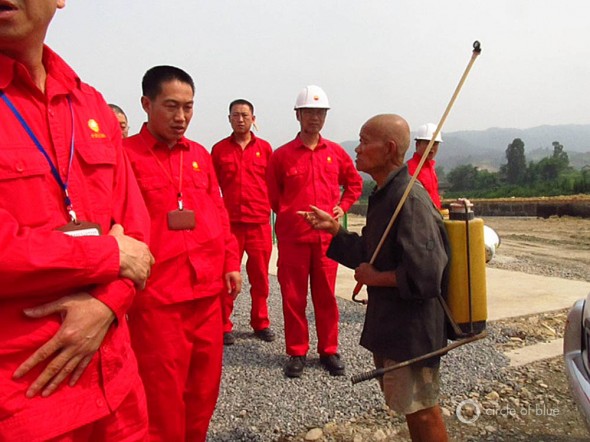
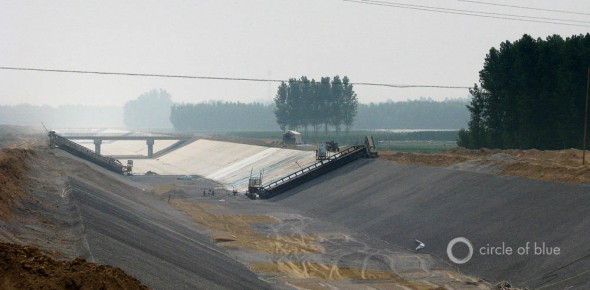
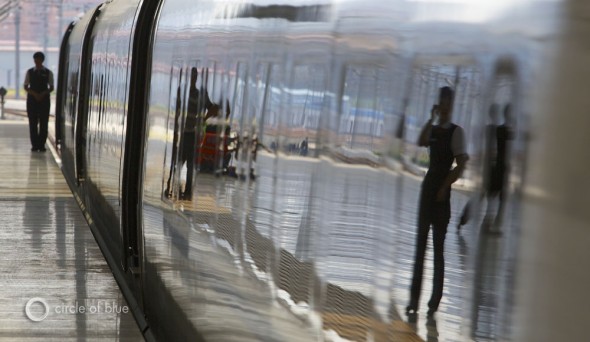
In an interview, Qian Yi, a professor and the dean of the School of Environment and Safety at Qingdao University of Science and Technology, explored the deepening conflict between China’s insistence on swift economic growth and its lengthening list of water, energy, and resource constraints.
“Everybody realizes we have this problem,” Qian said. “We have to protect our water. We have to protect our land. Eighty percent of our rivers are polluted. Air quality is better, but it’s not good enough. We ignored the balance of the environment and the economy.”
Qian paused, as so many Chinese academics and government officials do when asked why China does not pursue resource conservation and environmental safety with the same level of enthusiasm as has been displayed for so many other public programs.
“We have to consider economic development,” he said, almost shrugging. “We need an environment management system [of] legislation, consultation, enforcement, and inspection. We can afford that. We don’t have a cash shortage. We’re not short of awareness and intelligence. But we don’t have the most important parts — the combination of legislation, moral society, and culture.”
Unassailable Scale, Unapproachable Mess
There is no argument that China operates on a scale and at a speed unmatched by any nation, ever.
In Harbin and Shenyang, two of the largest cities in northeast China, we were awakened by the sounds of incomparable enterprise, the clanging steel of new high-rise housing, and the honking horns of jammed boulevards that is the background music in every city. In Chengdu, in southwest China, and Qingdao, along the Pacific Coast, we spoke with ordinary Chinese men and women and all manner of academics and government officers, enormously proud of China’s progress, yet genuinely skeptical of its staying power.
We took elevators to the summits of gleaming office towers and also walked by fetid rivers that China has been slow to repair. We dined on tastefully seasoned dishes and — after reporting from farms along the Yellow River — worried whether the vegetables had been irrigated with industrial wastewater. We rode in roomy new Buicks and Audis and breathed air so filthy with coal dust and oxides that the sidewalks were coated with a greasy black film.
Here in Heilongjiang, where new concrete irrigation canals replace channels dug from mud 50 years ago, farmers delight in flooding rice paddies and spraying corn fields with water that does not have as much grit and dirt. But like so much of China’s development strategy, the big thought — driven by need and urgency — to expand irrigation networks to the erodible grasslands of neighboring Inner Mongolia, Jiliin, and Liaoning provinces does not prompt nearly as much consideration as the plainly visible consequences should require.
“These are sandy lands,” said Li Qinglu, a retired professor and environmental advocate in Shenyang, noting that reviving the era of plowing in northeast China’s grasslands is unthinkable. “Only grass grows there. Only grass should grow there.”
Indeed, in considering what could be gained, and what seems certain to be lost in irrigating northeast China’s grasslands, the inescapable conclusion is this: The nation that now leads the world in expensive crash programs to bolster the economy and modernize patterns of civilization — immense high-rise housing developments in almost every city, new subways in more than 30 cities, a 16,000-kilometer (10,000-mile) high-speed rail network, a concentration of seawater-cooled nuclear plants, giant pipelines to transport water from the Yangtze River in the south to water-scarce cities in the north, expansive new irrigation systems to water thirsty farmland — has no similarly impassioned focus on clearing the skies, scrubbing the waters, and safeguarding the lands from the uncivil consequences.
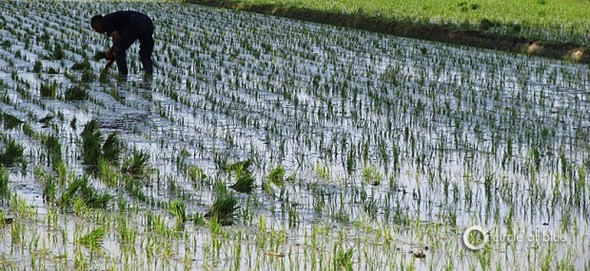
Circle of Blue’s senior editor and chief correspondent based in Traverse City, Michigan. He has reported on the contest for energy, food, and water in the era of climate change from six continents. Contact
Keith Schneider


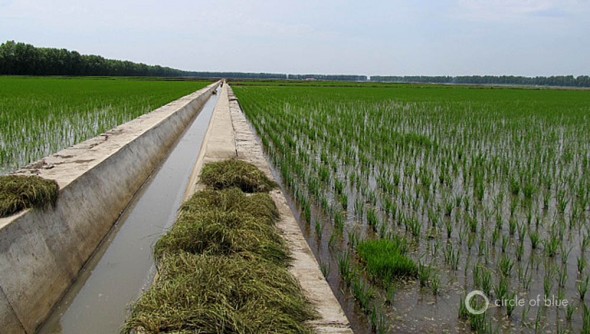
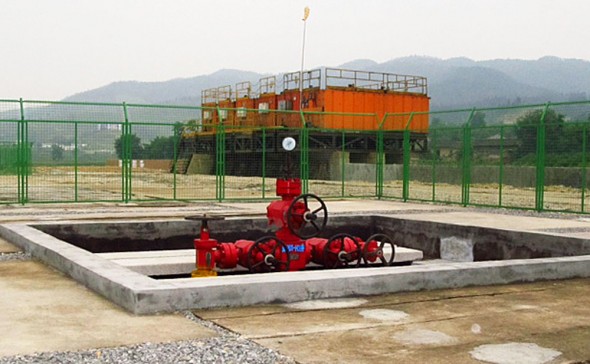

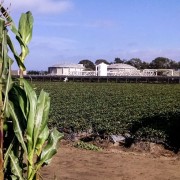
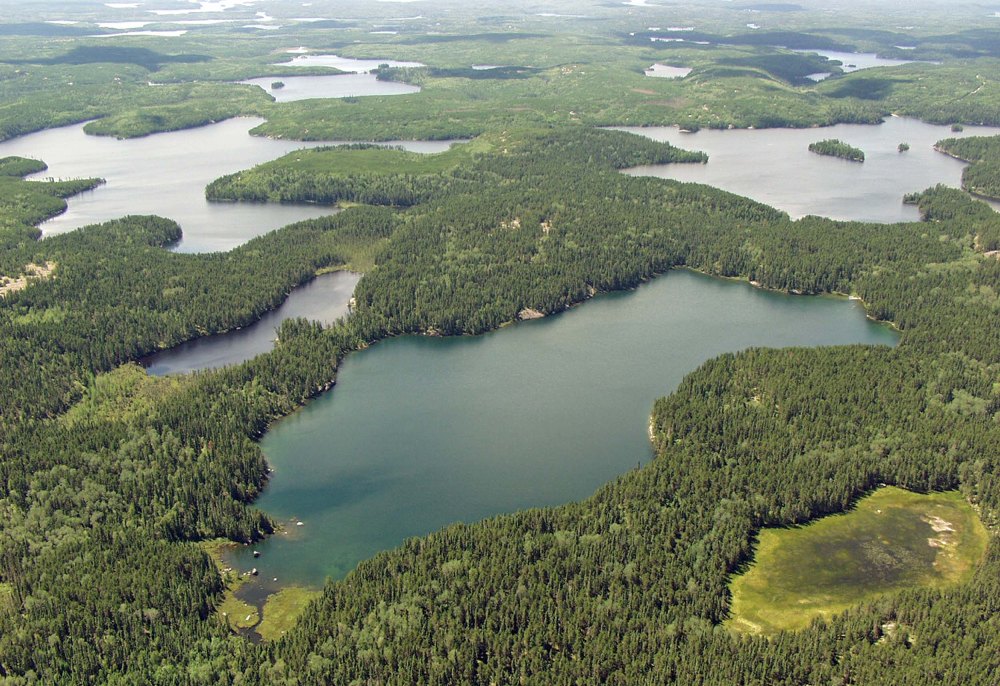
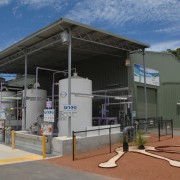
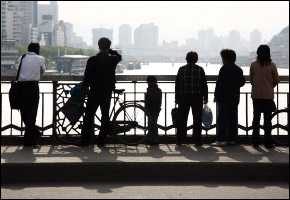
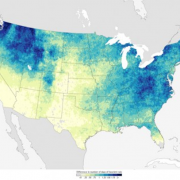
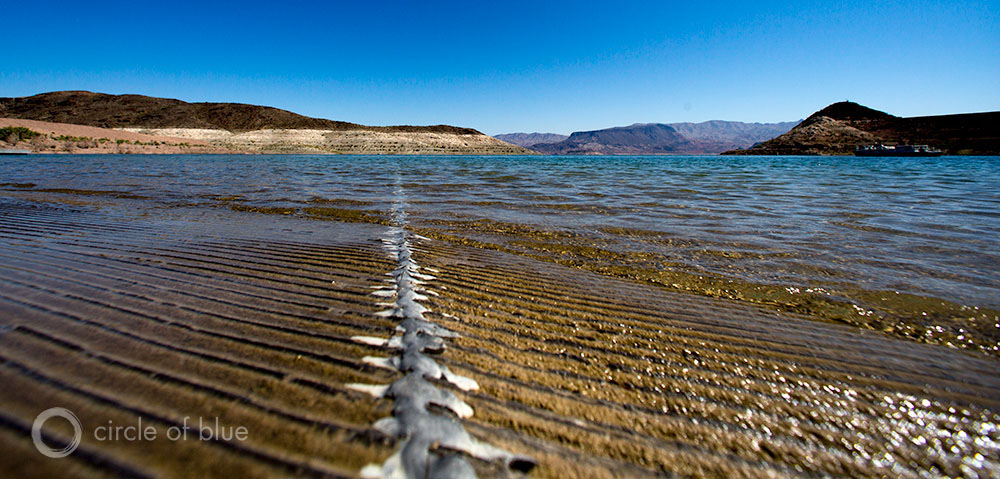



Hi Keith — Excellent story, per usual! Here in the US we keep hearing stories of multinational petrol companies licking their lips with excitement over the fracking prospects in China. Are these reports over stated, or do the petrol companies have a plan to overcome the obstacles you list for fracking in Sichuan and other locales? What may explain the conflicting reports emerging in the press?
Christine
Christine, there is excitement globally about China’s shale prospects, as you know. What I found, at this early stage, is that the prospect of big natural gas production is running headlong into the reality of numerous impediments. Chinese authorities told me that the reserves are plentiful. They are turning out to be difficult to tap. The projections of a quick flood of shale gas into domestic markets are unreasonable to attain. It will take longer than five years, as Chinese government officers initially said earlier this year. China just isn’t drilling that many wells at this point.
Excllent article thank you. I would however like to clarify that Shell is not a partner in the Wei-201H3 well. I look forward to further articles from your group.
Anthony Cortis
General Manager JinQiu Gas Venture
Sichuan, China
Shell China E&P Ltd